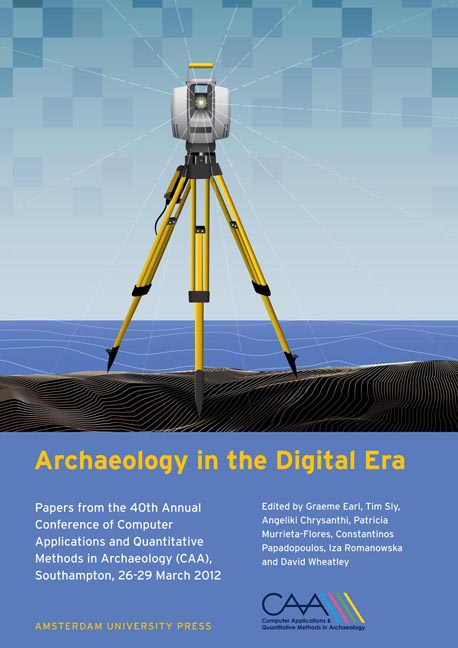 Archaeology in the Digital Era
Archaeology in the Digital Era Published online by Cambridge University Press: 16 February 2021
Abstract:
The Royal Commission on the Ancient and Historical Monuments of Scotland (RCAHMS) maintains the national inventory and hosts the national collections of the archaeological and built heritage of Scotland, including its maritime waters. Both professional users and the wider public have been able to view information in the inventory online, through Canmore, since 1998. Yet there was no mechanism to actively contribute to the knowledge base. Since our centenary in 2008, new strategies have evolved to harness the knowledge of both our professional and public users, to contribute directly to the national inventory.
This paper describes the opening-up - letting go - of Canmore, through a number of routes, to enable new partners to actively contribute their knowledge directly and efficiently to Canmore through a co Ua bora tive and flexible approach. The paper then discusses how information is disseminated using a similarly agile approach that aims to allow users to find and use the data that they need, while serving the needs of imperatives such as the European Union INSPIRE Directive. It is noted that pragmatism is required; government bodies, audiences and partners do not all move at the same pace as the available technologies.
Keywords:
National Inventory, Information Management, Big Data, Social Media, Web Services
Introduction
The Royal Commission on the Aacient and Historical Monuments of Scotland (RCAHMS) maintains the National Inventory and hosts the National Collections of the archaeological and built heritage of Scotiand, including its maritime vzaters. In the last twenty five years, the Inventory's database has evolved from a paper-based card-index system, partly based on a reference system developed by the former Archaeology Branch of the Ordnance Survey supplemented by the paper catalogues to the RCAHMS Collections, to an Oracle database and ArcGis Geographic Information System with well-established online search facilities through Canmore (http://canmore.rcahms.gov.uk).
The transition from card-index to database has been progressive, reflecting changing priorities within the office as well as an enthusiastic engagement with the Internet, especially as a means of promoting RCAHMS’ holdings. The RCAHMS Canmore online database was launched in April 1998 and has been evolving since.
To save this book to your Kindle, first ensure [email protected] is added to your Approved Personal Document E-mail List under your Personal Document Settings on the Manage Your Content and Devices page of your Amazon account. Then enter the ‘name’ part of your Kindle email address below. Find out more about saving to your Kindle.
Note you can select to save to either the @free.kindle.com or @kindle.com variations. ‘@free.kindle.com’ emails are free but can only be saved to your device when it is connected to wi-fi. ‘@kindle.com’ emails can be delivered even when you are not connected to wi-fi, but note that service fees apply.
Find out more about the Kindle Personal Document Service.
To save content items to your account, please confirm that you agree to abide by our usage policies. If this is the first time you use this feature, you will be asked to authorise Cambridge Core to connect with your account. Find out more about saving content to Dropbox.
To save content items to your account, please confirm that you agree to abide by our usage policies. If this is the first time you use this feature, you will be asked to authorise Cambridge Core to connect with your account. Find out more about saving content to Google Drive.